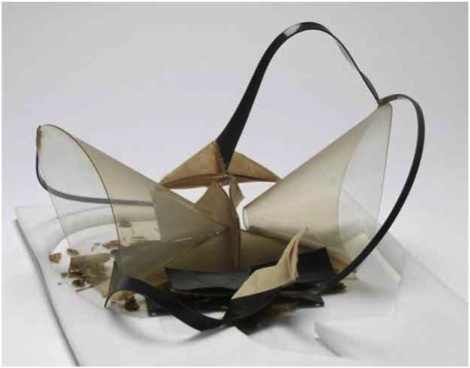
The Disposable Dark Age
Despite what The Graduate taught us, investing in plastic isn’t always a smart bet. Slate has an article discussing the troubles museums are having as their modern art collections begin to age. Though plastic gets a bad rap for not being biodegradable, sculptures made of it just don’t seem to last.
In the 1920s, Gabo and other artists began experimenting with plastic, both because it offered the freedom to create any shape in any color and because they believed artists should embrace technology and a plastics-based industrial future. (Gabo was trained as an engineer.) Plastics manufacturers assured the artists that cellulose acetate was durable—Greek marble for a new generation. Not quite. It turned out plastics were no more intrinsically stable (and sometimes less stable) than wood, paint, or any other media—a detail Gabo and the Philadelphia curators never suspected until too late.
The UK’s Tate has done plenty of research trying to preserve some of this work and has published several papers in its online research journal documenting the process. Researchers even created this Powerpoint presentation to explain how to properly care for plastic works. These images, from that presentation, show the extent of the degradation in one of Gabo’s pieces – Construction in Space: Two Cones. The first one was taken in 1978,

and the second today.

(Sent to us by member Dan Novy – Thanks!)
Join our newsletter for the latest in long-term thinking
Subscribe